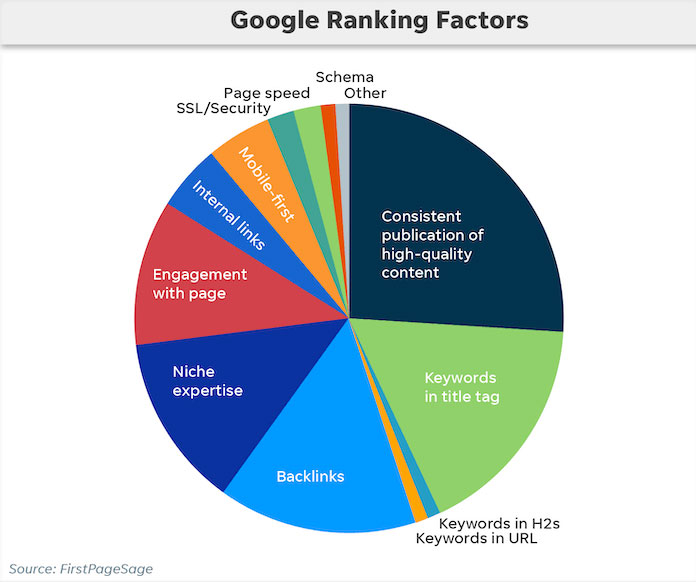Tips to Increase Your Website’s Ranking, Includes most Proven Methods to Increase Your Google Rankings
Steps to improve your website SEO to Rank Higher on Google
- Step 1: Improve Your On-Site SEO
- Step 2: Improve Website Load Time/Speed
- Step 3: Add Target Keywords To Your Page
- Step 4: Monitor Your Technical SEO
- Step 5: Match Your Content to Search Intent
- Step 6: Reduce Your Bounce Rate
- Step 7: Find Even Keywords to Target
- Step 8: Publish High-Quality Content
- Step 9: Build Backlinks to Your Site
- Step 10: Track and Monitor Your Results
How to rank website on google first page ?
Achieving a high ranking on Google’s first page involves a combination of various strategies related to search engine optimization (SEO). Keep in mind that SEO is an ongoing process, and it may take some time to see significant results. Here are some essential steps to help improve your website’s chances of ranking on Google’s first page:
1. Keyword Research:
- Identify relevant keywords for your content. Use tools like Google Keyword Planner, SEMrush, or Ahrefs to find keywords with high search volumes and moderate competition.
2. On-Page SEO:
- Title Tags and Meta Descriptions: Optimize title tags and meta descriptions for each page with relevant keywords.
- Header Tags: Use proper header tags (H1, H2, H3, etc.) to structure your content.
- URL Structure: Create clean and descriptive URLs containing keywords.
- Keyword Placement: Include your target keywords naturally in the content, but avoid keyword stuffing.
3. Quality Content:
- Create high-quality, valuable, and engaging content that satisfies user intent. Google prioritizes content that provides useful information.
4. Backlink Building:
- Build high-quality backlinks from reputable websites. Quality is more important than quantity. Focus on natural link-building strategies.
5. Mobile Optimization:
- Ensure your website is mobile-friendly. Google uses mobile-first indexing, so a mobile-responsive design is crucial.
6. Page Speed:
- Improve your website’s loading speed. Use tools like Google PageSpeed Insights to identify and fix issues affecting your site’s speed.
7. User Experience (UX):
- Provide a positive user experience. Easy navigation, clear calls to action, and a well-designed site contribute to better user satisfaction.
8. Technical SEO:
- Fix crawl errors, use a sitemap, and ensure proper robot.txt usage.
- Implement SSL for a secure connection (HTTPS).
9. Local SEO (if applicable):
- Optimize your Google My Business listing for local searches. Include accurate business information, customer reviews, and relevant local keywords.
10. Social Signals:
- Maintain an active presence on social media. While social signals may not have a direct impact on rankings, they can contribute to increased visibility and traffic.
11. Regular Content Updates:
- Keep your content fresh and up-to-date. Regularly update and add new content to show that your website is actively maintained.
12. Analytics and Monitoring:
- Use tools like Google Analytics to monitor your website’s performance. Analyze user behavior, traffic sources, and other relevant metrics.
13. Schema Markup:
- Implement schema markup to provide search engines with more context about your content.
14. E-A-T (Expertise, Authoritativeness, Trustworthiness):
- Build and showcase your expertise. Establish trust by providing accurate and reliable information.




